Trips:
Via Cassia: Sutri to Orvieto

The great pilgrimage road to Rome
Before the rise of Rome, this region was home to Etruscans and Faliscans: the first literate people in Italy, and the first with aristocracies and urban centers. Culturally precocious, they hobnobbed with the Greeks, created artistic masterworks and developed technologies in construction and hydrology emulated by the Romans. After resisting Roman expansion for centuries, they were finally overrun in the third century BC. For this military campaign the Romans built the Via Cassia (map, in red), breaching the strategic gap at Sutri, and cutting through the Etruscan heartland to Florence.
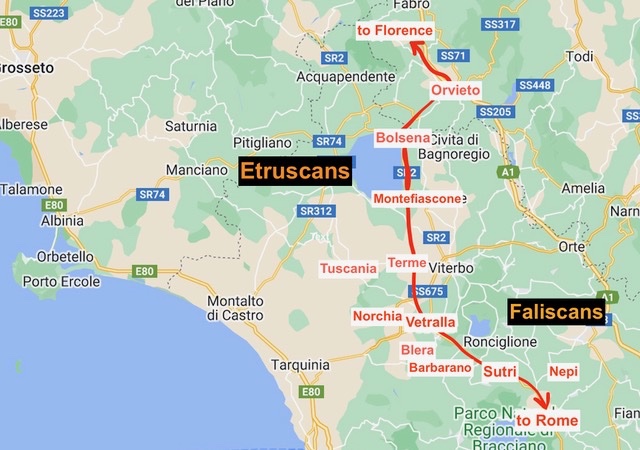
In the Middle Ages Sutri became a bone of contention between the Pope and the Lombards advancing from the north. In the historic “Donation of Sutri” (728), it was presented to the Pope by the Lombard king, marking the birth of the Papal States, which grew to include much of Italy. A few decades later the Pope asked help from the most powerful man in Europe: King Charlemagne of the Franks. He vanquished the Lombards, and the Pope crowned him Roman Emperor, reviving the ancient title. The ensuing Holy Roman Empire was to last for a thousand years.
The Via Cassia has stories to tell. It was Charlemagne’s route to Rome. The Archbishop of Canterbury traveled it in the year 990; countless thousands of pilgrims would follow. Journeying between Rome and Florence, Michelangelo and his fellow artists drew inspiration from the marvelous Roman ruins along the way.
Vulcanism: Sutri is wedged between two clusters of volcanic hills; a third encloses scenic Lake Bolsena, the largest volcanic lake in Europe. Hot springs, popular with Etruscans, Romans, and modern Italians, abut the Via Cassia west of Viterbo (“Terme” on map).
The towns
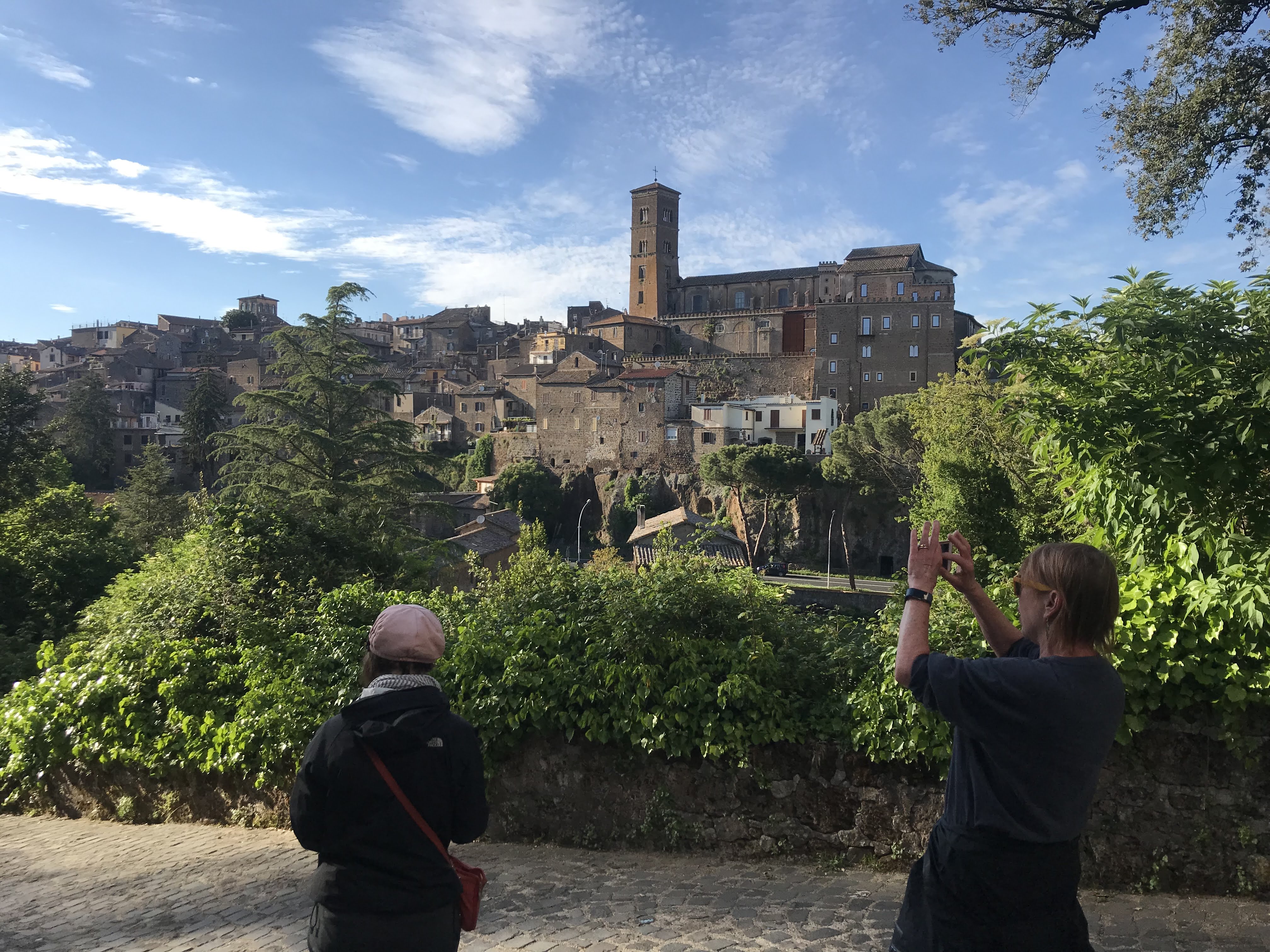
Sutri (Roman Sutrium)
Sutri is a lovely medieval hill town with ancient origins, legendarily founded by the god Saturn. Along the Via Cassia stand a stone-cut Roman amphitheater, Etruscan tombs and a Mithraeum: a cult chamber of the god Mithras built by Roman soldiers back from Persia. A legend goes that Charlemagne stopped in Sutri on his way to Rome in 800 AD and encountered his lost nephew Orlando, who went on to become his chief paladin, a great hero celebrated in medieval song. Local place names honor Orlando and Charlemagne.

The archaeological park contains Etruscan roads cut deeply into the rock, bountiful vegetable gardens and rushing streams.

Nepi (Roman Nepete) and the Via Amerina
Nepi was an ancient Faliscan settlement, later Roman, on a ridge between two gorges. The Roman Via Amerina passes by, heading north into Umbria. Alongside it a waterfall plunges into a gorge, and a path leads to Faliscan roads cuts. North of Nepi the Via Amerina still has stretches of original paving and many rock-cut tombs, both Roman and Faliscan. One Roman bridge still carries farm vehicles; two others have impressive remains. Pope Alexander VI built a castle in Nepi for his daughter Lucrezia Borgia.

Hot springs
In the Plain of Viterbo, along the Via Cassia between Vetralla and Montefiascone, is a line of volcanic hot springs, popular since ancient times (Terme on map). One of them, Bullicame, is mentioned in Dante’s Inferno. We’ll visit an elegant modern spa, “Tuscia Terme,” recently opened near the ruins of a Roman bath complex. Nearby are remnants of the Via Cassia and a deep Etruscan road cut.
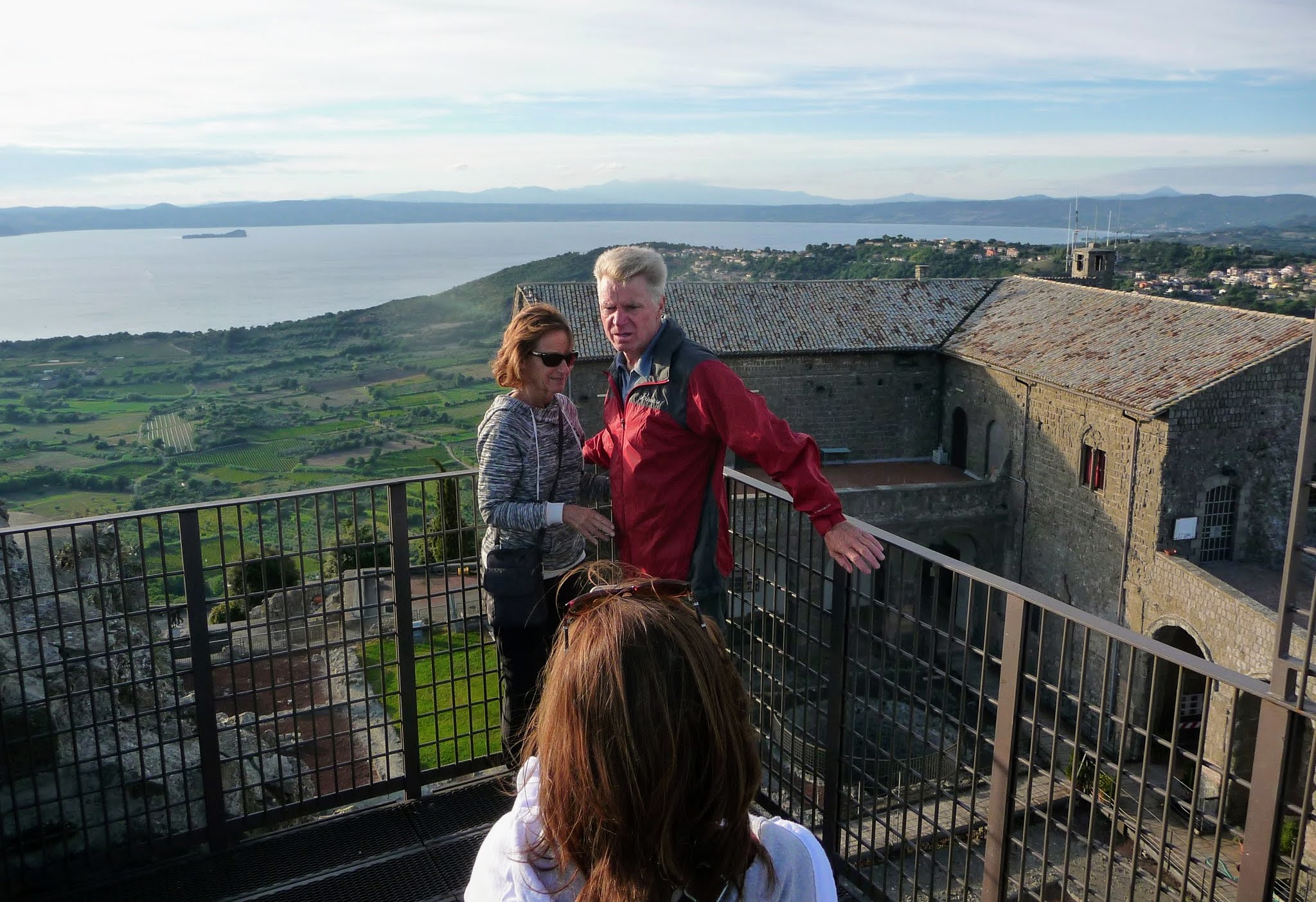
Montefiascone
A thousand-year-old fortress crowns the tall hill of Montefiascone, offering spectacular views of Lake Bolsena. The town has been a major road intersection since Etruscan times, and became a popular stop for Rome-bound pilgrims in the Middle Ages. It remains so today. The unusual two-story Church of San Flaviano (11th-century) hosts many music concerts. Montefiascone is known for a dry white wine called “Est! Est!! Est!!!”; we’ll learn about its humorous history.

Just south town is one of the longest and best-preserved stretches of the Via Cassia, as it passes through scenic farmland. The road continues north along a ridge above the lake. We cross a stream and stop to rest at a small waterfall.

Bolsena
Bolsena town lies on the shore of beautiful Lake Bolsena, the largest volcanic lake in Europe, and one of the cleanest. There are beaches, cafes and a small craft harbor. Fishermen ply their nets on the lake; restaurants offer perch, eel and a delicious whitefish called coregone.
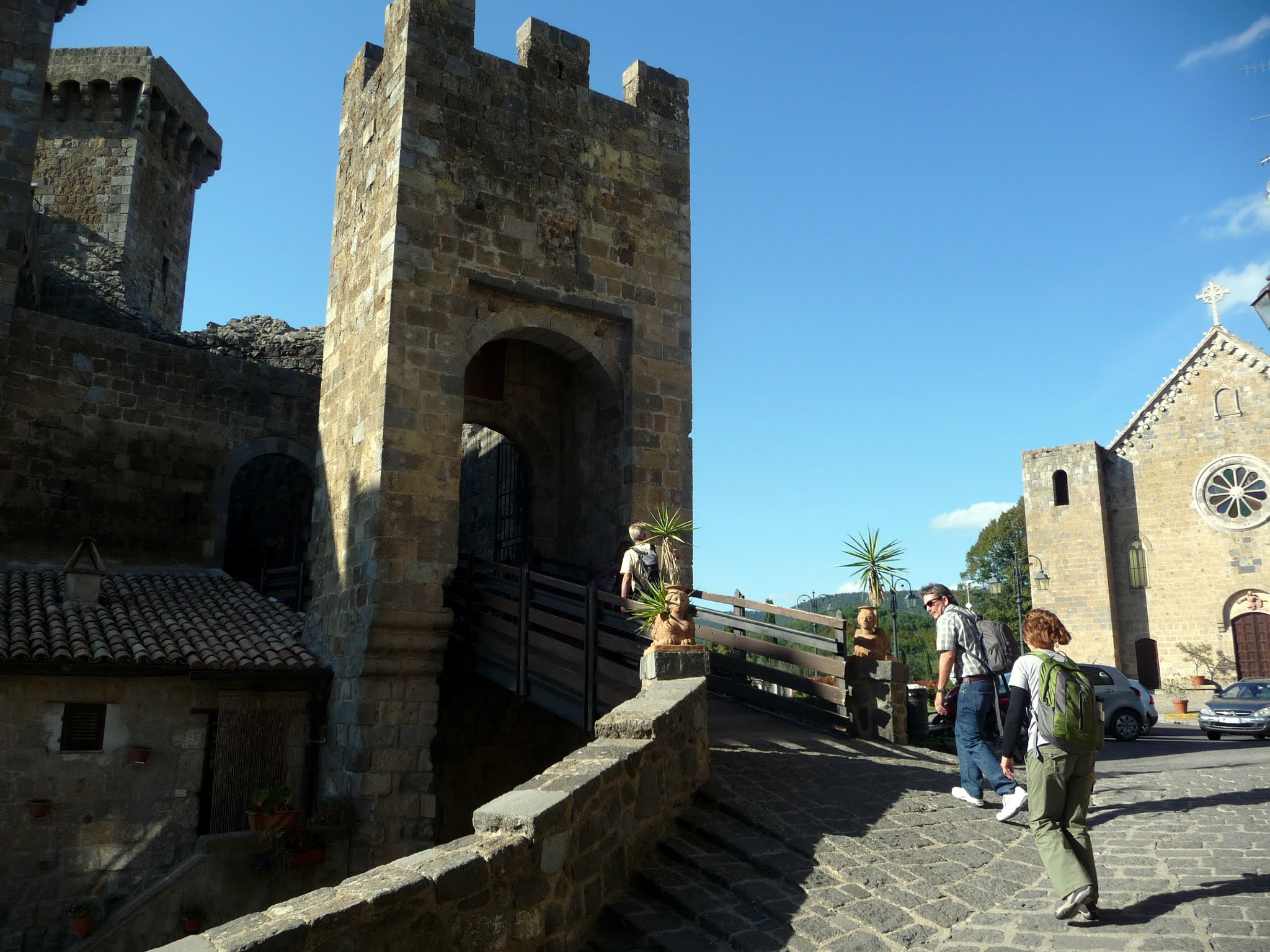
We climb the ramparts of Bolsena’s 14th-century castle, and walk to the archaeological site of Volsinii, a Roman town with a curious history. We visit the church of Bolsena’s patron Saint Cristina; her tomb was discovered in the catacombs below. In this church the famous Eucharistic Miracle took place in 1263. To commemorate it the monumental Cathedral of Orvieto was built and the Feast of Corpus Domini was established, celebrated with elaborate medieval pomp in both Bolsena and Orvieto.
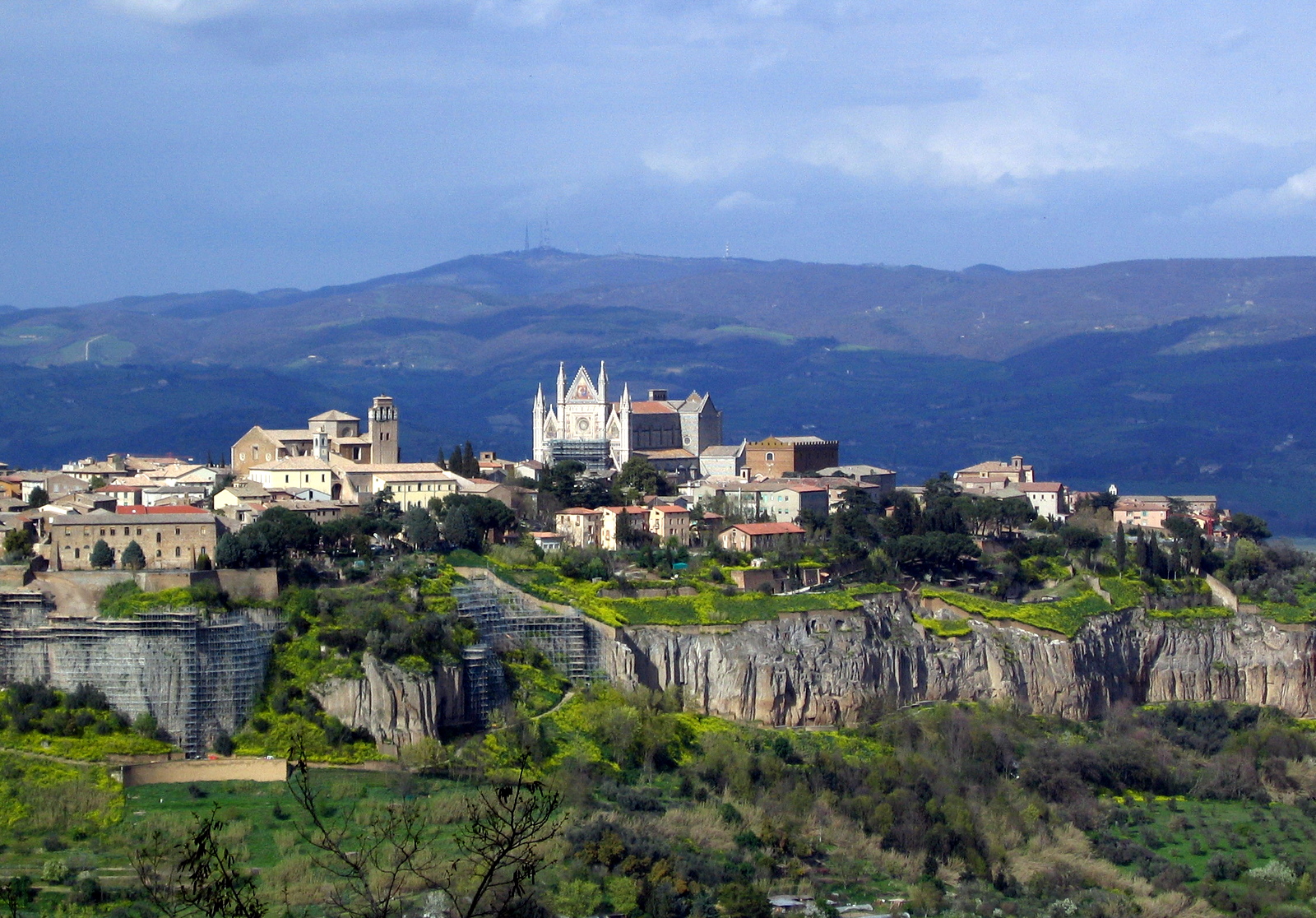
Orvieto
Walking to Orvieto we stop for lunch at the village of Canonica, where lovely Renaissance wall paintings have been restored in a small church.
Orvieto is renowned for wine, hand-painted pottery, a well-preserved medieval center, and the most famous Gothic cathedral in Italy. The façade is a medieval masterpiece of mosaic and sculpture; the interior has work by Luca Signorelli, Fra Angelico and other well-known Renaissance artists.
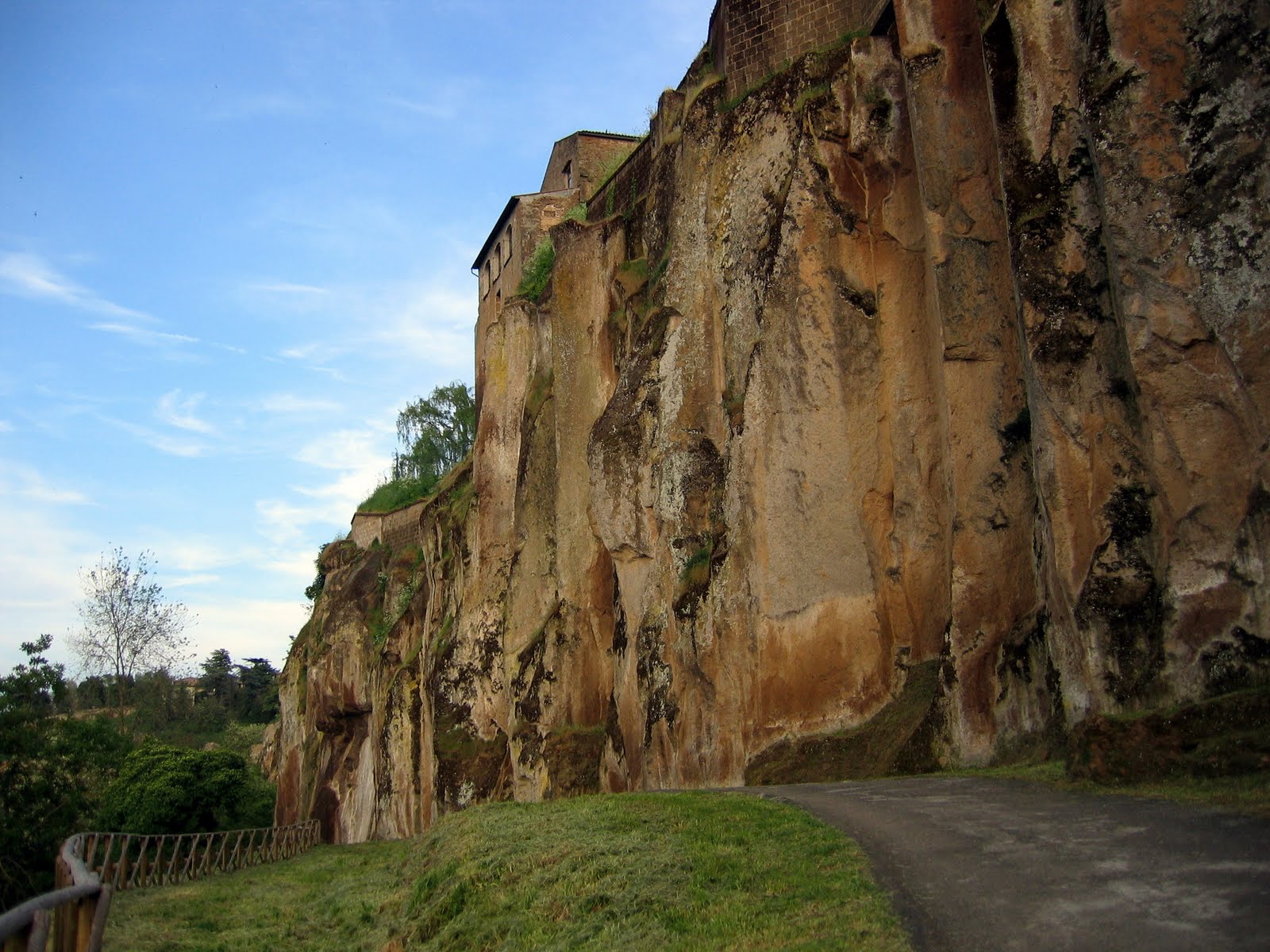
Halfway down Orvieto’s steep cliff, a loop trail offers lovely views of the surrounding countryside. We visit the unusual Etruscan necropolis of Crocefisso del Tufo, with tombs built of stone blocks on a rectangular street grid.
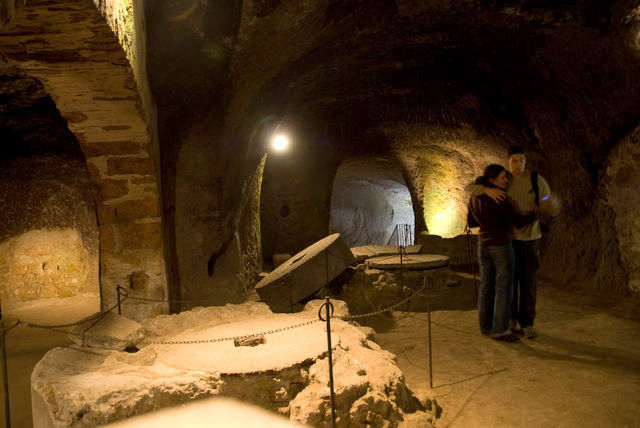
Under the town is a labyrinth of caves and tunnels carved in the rock, used since antiquity for many different purposes: drainage, water supply, storage, trash disposal, grinding of grain, handicrafts, raising pigeons. Several of these can be visited, including “Saint Patrick’s Well”: in 1527 the Pope escaped to Orvieto when Rome was sacked by troops of the Holy Roman Emperor. He commissioned Antonio da Sangallo to build a deep well to ensure adequate water supply for the city. It’s known as Saint Patrick’s Well because of its similarity to a well in Ireland.